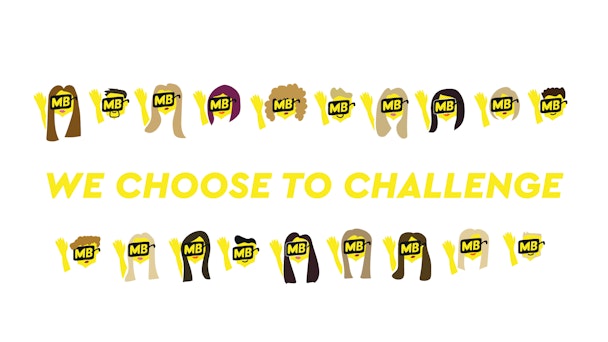At Media Bounty we choose to challenge gender norms
Ahead of International Women’s Day, Media Bounty organized a company-wide discussion on gender inequality. We discussed societal pressures on women, challenges faced by women in the workplace, and specifically, the representation of women in the media. Yes, we’ve made progress since the Mad Men era, but there’s still a long way to go. With Covid-19 reversing domestic equality in households, and shocking statistics surrounding the effect it's had on women-specifically, we asked what can we do to close this gap?

With shocking statistics around Covid-19's affect on gender equality, how do we close the pay gap?
But where do you start? Have you heard of ‘The Good Girl complex’? It’s the idea that from birth, girls are allocated traits to abide by in terms of behavior and hobbies. We’re given pink baby grows, plastic toy kitchens, and dolls to play with, while boys run rampant in the playground and are allowed to play fight. This, of course, is not the way for all (my mother vowed never to put me in pink, and I was encouraged to pursue sport over beauty any day of the week). Still, even if our parents were able to avoid gender bias, they weren’t able to control the media and advertising consumption seen daily.
In the UK media industry, 64% of national newspaper editors are men, and two-thirds of the journalists they employ are men. In the entertainment industry, out of the top 100 grossing films in 2019, only 12% of directors were women. If most of what we consume is through the male gaze, how can both sexes' opinions and needs be accurately reflected? OK, we can’t change the world overnight, but the women and men in advertising can make the changes we want to see.
When we work on client briefs, we look at audience data and creative messaging to ensure no biases are assumed and content is reflective of the ‘real’ world. For our client Bodyform, the rose-tinted portrayal of menstruating women rollerblading has long gone, now replaced by women owning their body narratives. ‘Wombstories’ is a great example: post-natal depression, endometriosis, same-sex IVF and child-loss were highlighted in the mainstream media – they’re not comfortable subjects, but they happen. Our job is to create positive spaces across digital and social for women to speak out and smash societal taboos. Success isn’t measured by the number of likes but against the brand sentiment Bodyform ‘understands me as a woman’.
There are other great examples of brands using their creative platforms to show the reality facing women. US company Frida released an awe-inspiring TVC on breastfeeding and leaking (created by ad agency Mekanism), removing the sexual connotations of breasts and showing them for what they are for many women. Dove’s 'Real Women' and Nike’s 'Like a Girl' are also trailblazers.
But the battle isn’t won. There’s still more to be done. We need to hero women in their real roles, not typecast as the doting wife, the domestic goddess, the sexualized young professional ‘boss woman’ just to hit a brief. Brands, and agencies, have a responsibility – and we encourage you to play your part.
Sophie Garrett is account director at Media Bounty.
Content by The Drum Network member:

Media Bounty
We’re Media Bounty. And we’re working to become the UK’s leading ethical independent creative agency by 2026.
Our team delivers award-winning strategy,...

